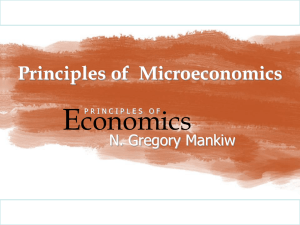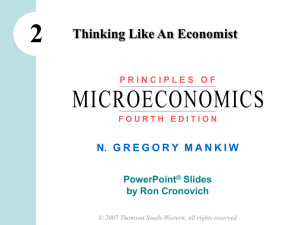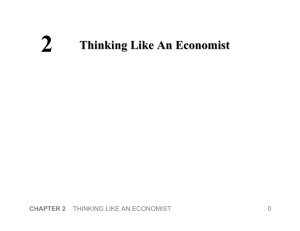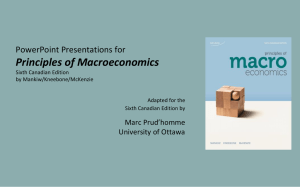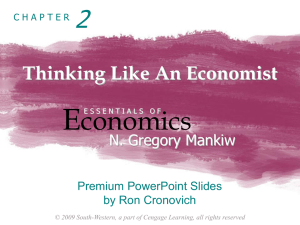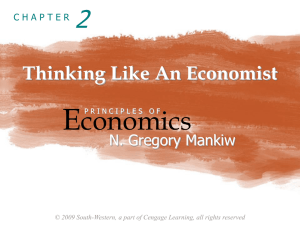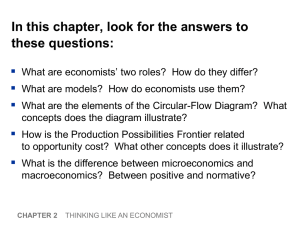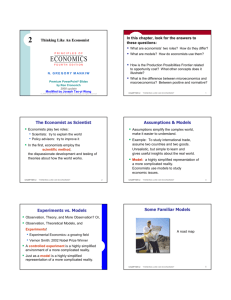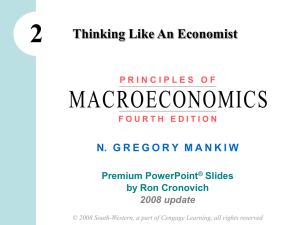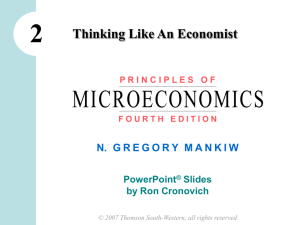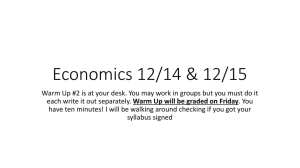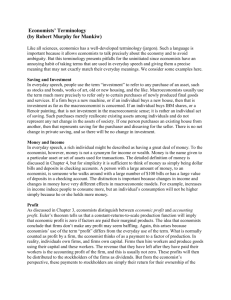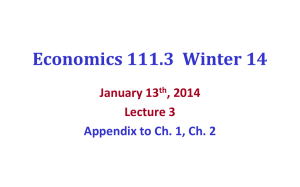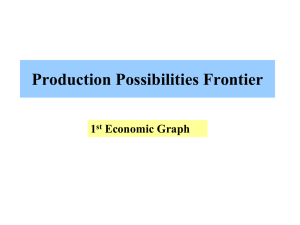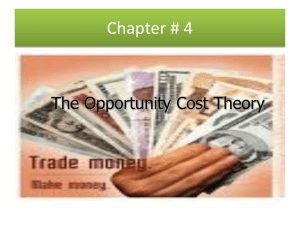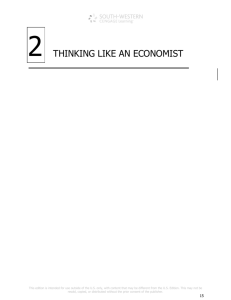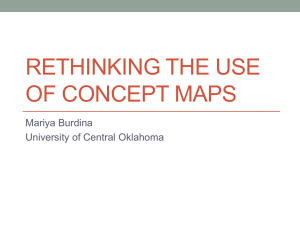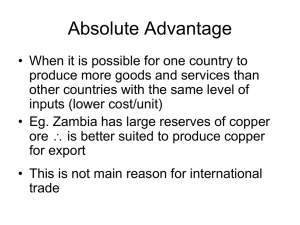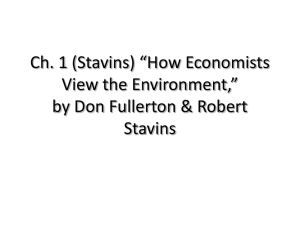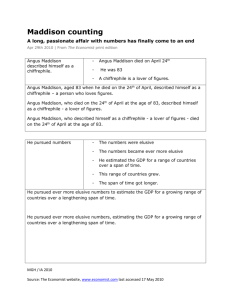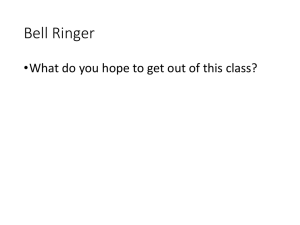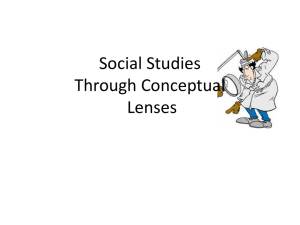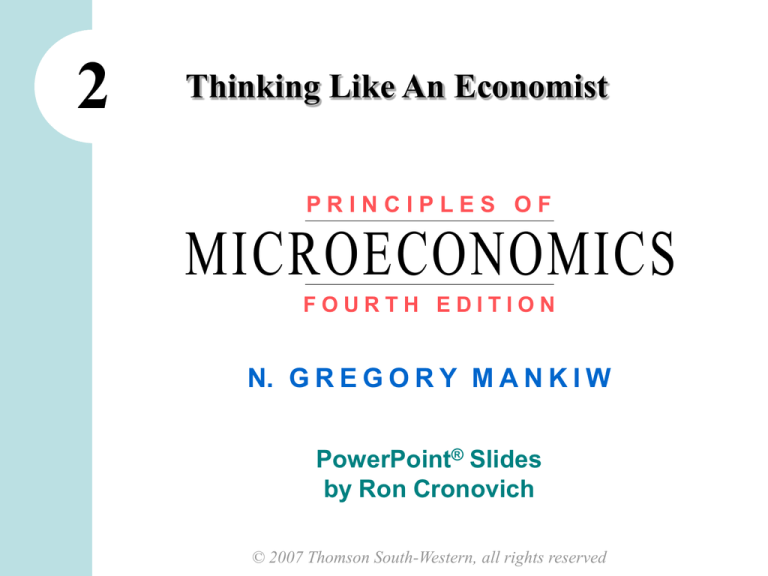
2
Thinking Like An Economist
PRINCIPLES OF
MICROECONOMICS
FOURTH EDITION
N. G R E G O R Y M A N K I W
PowerPoint® Slides
by Ron Cronovich
© 2007 Thomson South-Western, all rights reserved
In this chapter, look for the answers to
these questions:
What are economists’ two roles? How do they differ?
What are models? How do economists use models?
What are the elements of the Circular-Flow Diagram?
What concepts does this diagram illustrate?
How is the Production Possibilities Frontier related
to opportunity cost? What other concepts does it
illustrate?
What is the difference between microeconomics and
macroeconomics? Between positive and normative?
CHAPTER 2
THINKING LIKE AN ECONOMIST
1
The Economist as Policy Advisor
As scientists, economists make
positive statements,
which attempt to describe the world as it is.
As policy advisors, economists make
normative statements,
which attempt to prescribe how the world should be.
Positive statements can be confirmed or refuted,
normative statements cannot.
Govt employs many economists for policy advice.
E.g., the U.S. President has a Council of Economic
Advisors, which the author of this textbook recently
chaired.
CHAPTER 2
THINKING LIKE AN ECONOMIST
2
Why Economists Disagree
Economists often give conflicting policy advice.
They sometimes disagree about the validity of
alternative positive theories about the world.
They may have different values and, therefore,
different normative views about what policy
should try to accomplish.
Yet, there are many propositions about which
most economists agree.
CHAPTER 2
THINKING LIKE AN ECONOMIST
3
Our Second Model:
The Production Possibilities Frontier
The Production Possibilities Frontier (PPF):
A graph that shows the combinations of
two goods the economy can possibly produce
given the available resources and the available
technology.
Example:
• Two goods: computers and wheat
• One resource: labor (measured in hours)
• Economy has 50,000 labor hours per month
available for production.
CHAPTER 2
THINKING LIKE AN ECONOMIST
4
PPF Example
Producing one computer requires 100 hours labor.
Producing one ton of wheat requires 10 hours labor.
Employment of
labor hours
Production
Computers
Wheat
Computers
Wheat
A
50,000
0
500
0
B
40,000
10,000
400
1,000
C
25,000
25,000
250
2,500
D
10,000
40,000
100
4,000
E
0
50,000
0
5,000
PPF Example
Production
Point
on
Comgraph puters Wheat
A
500
0
B
400
1,000
C
250
2,500
D
100
4,000
E
0
5,000
Wheat
(tons)
6,000
5,000
E
D
4,000
3,000
C
2,000
B
1,000
A
0
0
100 200 300 400 500 600
Computers
CHAPTER 2
THINKING LIKE AN ECONOMIST
6
The PPF and Opportunity Cost
Wheat
(tons)
6,000
–1000
slope =
= –10
100
5,000
4,000
3,000
2,000
1,000
0
0
100 200 300 400 500 600
The slope of a line
equals the “rise
over the run” –
the amount the line
rises when you
move to the right
by one unit.
Here, the
opportunity cost of
a computer is
10 tons of wheat.
Computers
CHAPTER 2
THINKING LIKE AN ECONOMIST
7
At point A,
most workers are
producing beer,
even those that
are better suited
to building
mountain bikes.
Beer
Why the PPF Might Be Bow-Shaped
A
So, do not have to
give up much beer
to get more bikes.
CHAPTER 2
THINKING LIKE AN ECONOMIST
At A, opp. cost of
mtn bikes is low.
Mountain
Bikes
8
The PPF: A Summary
The PPF shows all combinations of two goods
that an economy can possibly produce,
given its resources and technology.
The PPF illustrates the concepts
of tradeoff and opportunity cost,
efficiency and inefficiency,
unemployment, and economic growth.
A bow-shaped PPF illustrates the concept of
increasing opportunity cost.
CHAPTER 2
THINKING LIKE AN ECONOMIST
9

